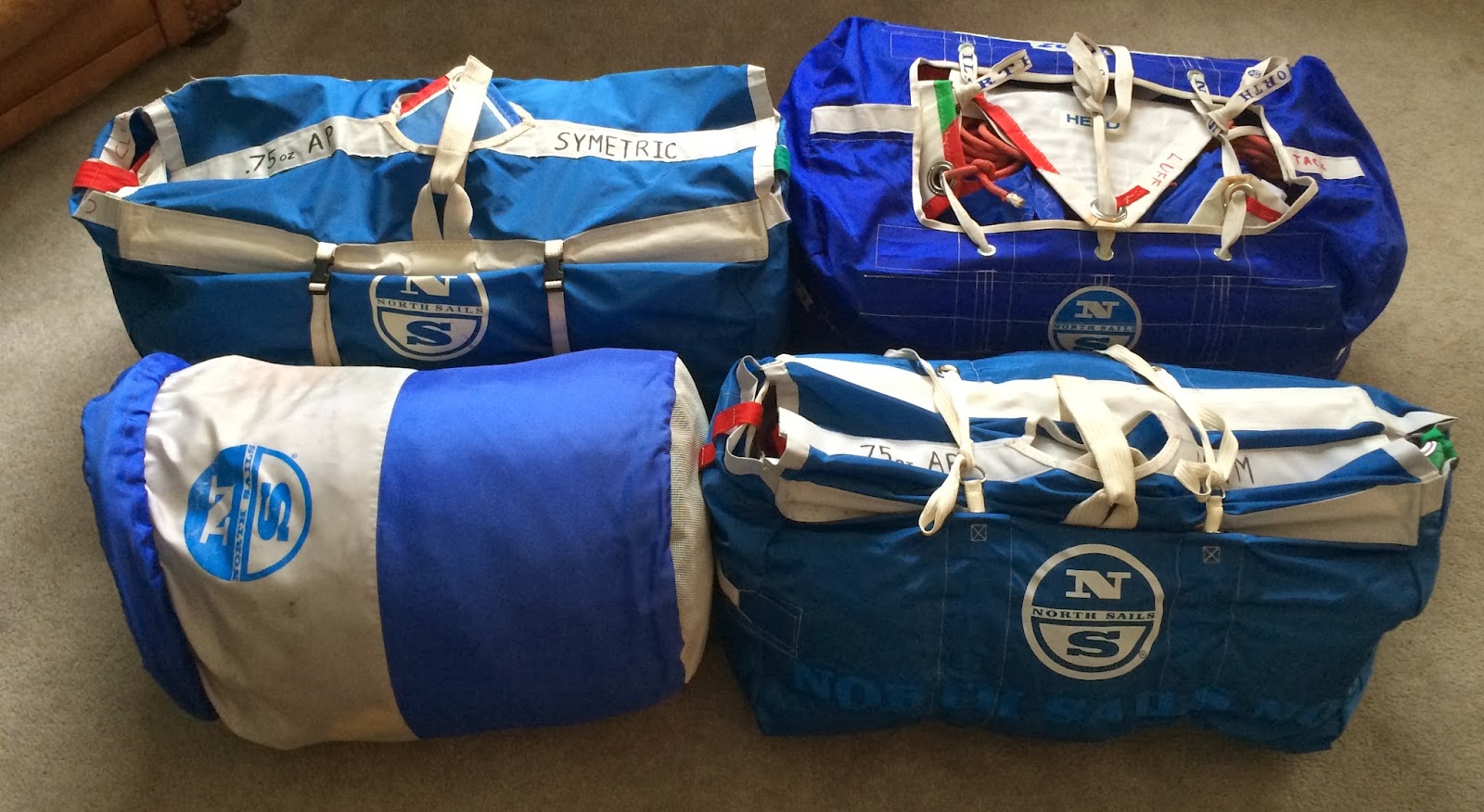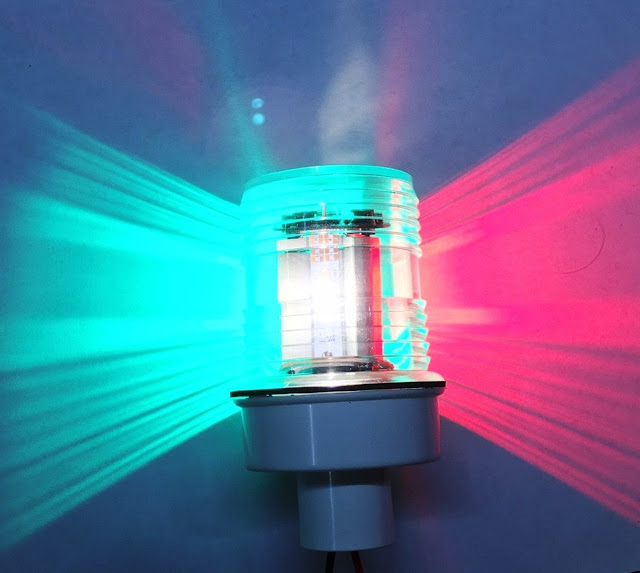Downwind sail inventory
Due in part to her non-overlapping rig, and her great stability, we have found that optimizing the off-wind sail inventory for a First 260 can pay huge dividends. So our inventory contains 4 primary spinnakers.
It's a collection of symmetrical and asymmetrical sails. One thing is very clear; if you are doing any windward/leeward racing, you have to use a poled kite to go deep enough to hit your polars. On the other hand, distance race reaching (and in particular light air reaching) requires asyms. Based on that, here is a detail of our inventory, from top-left going counter-clockwise.
To keep a sense of what sail to use when, we have created a spinnaker matrix based on apparent wind speed and direction. The area used by the AP runner seems small, but in fact that is following the polar VMG angle for running and is there for used anytime the mark is deeper than our polar angle. As over 70% of our races are W/L and the leeward mark is directly downwind, that sail gets the most use.
We will be modifying this chart as our data improves.
My opinion of the order to acquire the sails? Depends on your program.
For mixed W/L and distance racing
For W/L racing ONLY:
For Distance racing and general cruising
It's a collection of symmetrical and asymmetrical sails. One thing is very clear; if you are doing any windward/leeward racing, you have to use a poled kite to go deep enough to hit your polars. On the other hand, distance race reaching (and in particular light air reaching) requires asyms. Based on that, here is a detail of our inventory, from top-left going counter-clockwise.
- AP Runner. Because our venue is primarily light airs in the summer, we will be using a 0.6oz kite for running any time the mark is deeper than our polar angle. This kite is 35x19 (almost 600 sqr ft). This sail powers up the boat in even light air. It can be too much however in a breeze, so..
- Heavy Air Runner. This 0.75oz fractional kite is sized for the First 260 I and J measurements, and is cut with narrower shoulders with a flatter profile. It makes the sail easier to manage than the AP runner, and is used when the apparent wind is over 15 knots, or if we have a less experienced crew on board. It is also over 100 square feet smaller than the AP sail.
- Asym Reacher. This sail is flown on the pole and is never gybed. If the apparent wind is behind the beam but not a deep run, this sail is the choice. The AP runner is bigger, but the superior aerodynamic shape of this sail make it faster. Indeed, we fly it to telltails, and not to a breaking luff as you would a typical spinnaker.
- Asym Tight Reacher. This sail is tacked to the bow. Because the First 260 cannot fly overlapping headsails, this sail is used in lighter air to sail up to an apparent wind angle of 45 degrees. It is cut from 1.5oz nylon and has a dyneema luff line in the tape. You can read more about this sail HERE.
To keep a sense of what sail to use when, we have created a spinnaker matrix based on apparent wind speed and direction. The area used by the AP runner seems small, but in fact that is following the polar VMG angle for running and is there for used anytime the mark is deeper than our polar angle. As over 70% of our races are W/L and the leeward mark is directly downwind, that sail gets the most use.
We will be modifying this chart as our data improves.
My opinion of the order to acquire the sails? Depends on your program.
For mixed W/L and distance racing
- AP runner
- Asym tight reacher
- Asym reacher
- Heavy runner
For W/L racing ONLY:
- AP runner
- Heavy Runner
For Distance racing and general cruising
- Asym reacher
- Asym tight reacher
- AP runner





Comments
Post a Comment